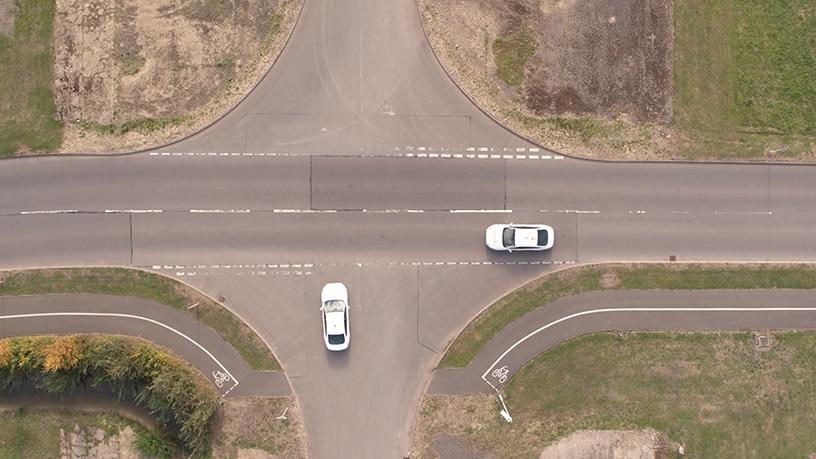
Motor company Ford is testing connected car sensor technology that will allow vehicles to navigate intersections without having to come to a standstill.
Called intersection priority management (IPM), the technology was designed to imitate how pedestrians adjust their speed to avoid others crossing their path, by either slowing down or speeding up.
IPM is currently being demonstrated this week in the UK, as part of the government-funded UK Autodrive programme. The aim is to eventually do away with unnecessary stops at junctions, which the company says will ease traffic flow and increase safety.
"We know that intersections and traffic lights can be a real bugbear for many drivers," says Christian Ress, supervisor for driver assist technologies at Ford Research and Advanced Engineering.
"With the connected car technology we have been demonstrating this week, we envisage a world where vehicles are more aware of each other and their environment, enabling intelligent co-operation and collaboration on the roads, and around junctions."
The company found that every year, the average driver spends two days waiting at traffic lights, and junctions are the cause of up to 60% of road traffic accidents.
"IPM uses vehicle-to-vehicle (V2V) communications to co-ordinate with other vehicles in the vicinity, and suggests optimum speeds that will allow cars to safely pass by each other at intersections without coming to a halt," Ford said in a statement.
"For the trial, test cars have been equipped with V2V communication systems that broadcast the vehicles' location, direction of travel and speed. The on-board IPM systems are able to identify an upcoming junction and the trajectory of other vehicles approaching it. It will then suggest an optimum speed for each vehicle as they approach the junction that will allow them pass through safely."
While there will be drivers behind the wheel during the trial this week, the technology was envisioned to be for autonomous vehicles.
"Automating how vehicles negotiate junctions with each other in this way may mean that, one day, vehicles could pass through safely and efficiently without the need for traffic lights or road signs. While today's autonomous vehicles operate independently using the sensor technologies and map data on-board, V2V and vehicle-to-everything (V2X) communications technologies could benefit the driverless cars of the future," the company said in a statement.
Share